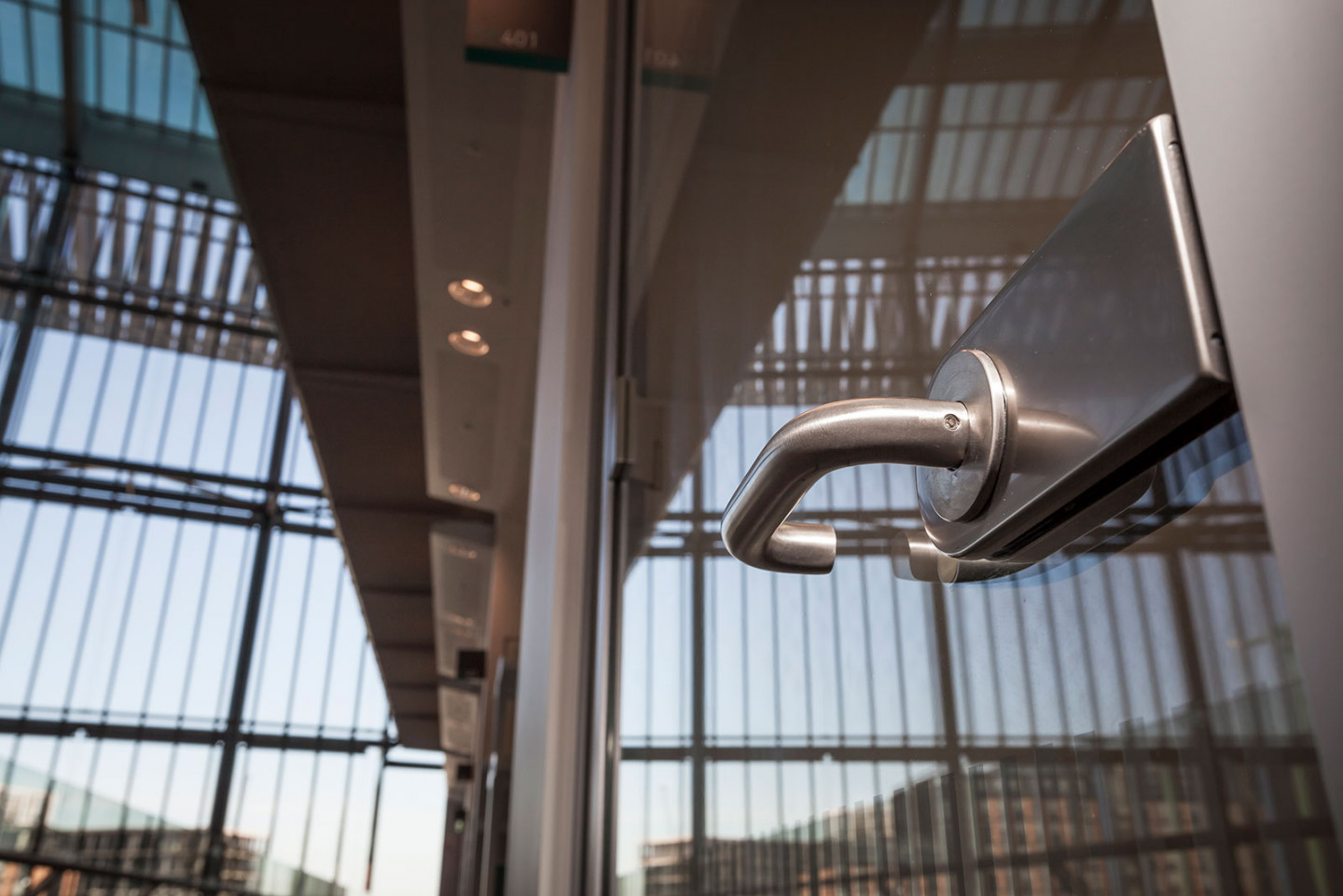Copper alloys—such as brass and bronze—are familiar building and engineering materials used for centuries thanks to their ease of fabrication, strength, durability and aesthetic appeal. Much more recently, a secondary benefit has been rediscovered: copper rapidly kills germs that settle on its surface.
While the ancient Egyptians and Greeks recorded their use of copper in medical applications, it wasn’t until the year 2000 when British researcher Professor Bill Keevil at the University of Southampton began exploring copper’s efficacy against modern threats such as E. coli and MRSA. His team has since been joined by researchers around the world in proving the efficacy of not just copper, but many copper-containing metals (copper alloys) in swiftly eliminating bacteria, viruses and fungi on contact (for example, 10 million MRSA in less than 10 minutes). These solid materials are collectively called ‘antimicrobial copper’.
The antimicrobial property offers obvious opportunities for reducing the spread of infections (such as the ‘flu virus) via touch surfaces. Germs deposited by a sneeze or the touch of a hand will die on antimicrobial copper surfaces whereas they can live for days, weeks or even months on non-copper surfaces, building up in between cleaning.
The increasing threat from pathogens in hospitals and the wider community is highlighting the role frequently-touched surfaces play in the spread of infection. This has led to the deployment of a wide variety of antimicrobial copper touch surfaces in hospitals—from bed rails and overbed tables to door handles and grab rails—but these items are also seeing broader use, in areas where people gather and infections spread readily, including offices and schools.
Innovative Alloys
Antimicrobial copper spans hundreds of different alloys, offering many options from particular combinations of properties to various colours. Companies across the globe have been creative, not just in terms of design, but also in formulating new copper alloys to serve this new market.
Older, workhorse alloys have also found new applications: copper-nickels are a staple of marine construction from heat exchanger systems in submarines to sheathing of offshore platforms. There, they are valued for their durability, and high corrosion and biofouling resistance. They are also among the antimicrobial copper alloys, and offer a rare feature: some of them are a silver colour virtually indistinguishable from stainless steel.
So it is that metals more commonly seen hard at work in naval vessels are also being shaped into diverse touch surface products from door handles and trolleys to bead chain for holding plugs or opening blinds.
All antimicrobial copper alloys are 100% recyclable at end of life, meaning they also have a contribution to make to sustainable design.
Designing Out Infection
Beyond higher-profile use in hospitals, antimicrobial copper touch surfaces are quietly making their way into airports, bus and train stations, schools, offices, care homes, restaurants and residential projects.
Copper is now well-established in design, with brass an upcoming trend. To benefit from copper’s antimicrobial efficacy, the metals must be used unlacquered (as lacquer would come between germs and the active surface beneath).
Because these are active surfaces, their colour will change over time, gradually darkening. This will typically happen more rapidly with pure copper, and slower with the silver-coloured alloys. This colour change does not adversely affect their antimicrobial efficacy.
Antimicrobial copper is not a substitute for regular cleaning and disinfection. It can and should be cleaned as normal for the area where it’s installed, just avoiding products that might leave a residue (which, again, could prevent germs from coming into contact with the copper surface).
Where to Install Antimicrobial Copper
When deciding where to install antimicrobial copper surfaces, the key is to consider which are the most frequently-touched surfaces in a given area, as these will most likely be the contamination hotspots. Likely candidates could be:
- Door handles and push plates
- Worktops
- Bathroom fittings (e.g. taps, grab rails and toilet seats)
- Lift interiors (especially control panels)
The antimicrobial properties of copper are intrinsic to the metal, meaning that even if subject to knocking and scratching, they will continue to be effective (unlike coatings or surface treatments, that will wear away with time and use).
Identifying Products
So, if antimicrobial copper surfaces vary in colour—and can look like stainless steel—how can you tell if a product is genuinely antimicrobial? The Antimicrobial Copper brand and accompanying Cu+ mark are used by companies internationally to identify efficacious products. The brand is administered by the International Copper Association, and only permitted to companies that follow strict guidelines. A directory of approved products is available on the Antimicrobial Copper website.
More Information
For more information on antimicrobial copper, and case studies of its use in hospitals, airports, schools and beyond, visit www.antimicrobialcopper.org.
For details of copper’s wider use in building and design, visit www.come-home-to-copper.co.uk.
If you’re an architect looking for inspiration—or have an interest in copper’s applications as roofing, facades and other architectural features—visit www.copperconcept.org.
